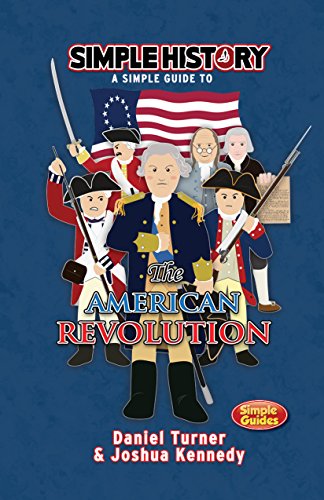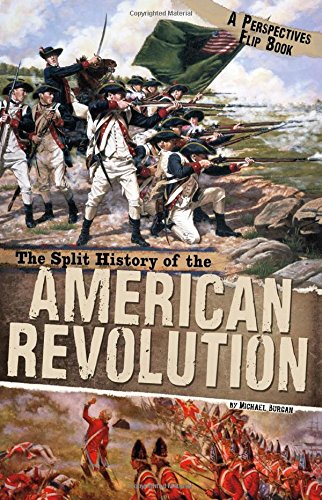-
The American Revolution: A History
Gordon S. Wood
Paperback (Modern Library, Aug. 19, 2003)NEW YORK TIMES BESTSELLER“An elegant synthesis done by the leading scholar in the field, which nicely integrates the work on the American Revolution over the last three decades but never loses contact with the older, classic questions that we have been arguing about for over two hundred years.”—Joseph J. Ellis, author of Founding Brothers A magnificent account of the revolution in arms and consciousness that gave birth to the American republic. When Abraham Lincoln sought to define the significance of the United States, he naturally looked back to the American Revolution. He knew that the Revolution not only had legally created the United States, but also had produced all of the great hopes and values of the American people. Our noblest ideals and aspirations-our commitments to freedom, constitutionalism, the well-being of ordinary people, and equality-came out of the Revolutionary era. Lincoln saw as well that the Revolution had convinced Americans that they were a special people with a special destiny to lead the world toward liberty. The Revolution, in short, gave birth to whatever sense of nationhood and national purpose Americans have had. No doubt the story is a dramatic one: Thirteen insignificant colonies three thousand miles from the centers of Western civilization fought off British rule to become, in fewer than three decades, a huge, sprawling, rambunctious republic of nearly four million citizens. But the history of the American Revolution, like the history of the nation as a whole, ought not to be viewed simply as a story of right and wrong from which moral lessons are to be drawn. It is a complicated and at times ironic story that needs to be explained and understood, not blindly celebrated or condemned. How did this great revolution come about? What was its character? What were its consequences? These are the questions this short history seeks to answer. That it succeeds in such a profound and enthralling way is a tribute to Gordon Wood’s mastery of his subject, and of the historian’s craft.
-
The American Revolution: A Visual History
DK, Smithsonian Institution
Hardcover (DK, April 5, 2016)The American Revolution will transport you back in time and onto the frontlines. This complete overview of the war brings all the action to life, from the Boston Massacre and the Boston Tea Party to the Declaration of Independence and the Treaty of Paris.Beginning with the first stirrings of colonial resistance, The American Revolution presents illustrated accounts of every major military action and comprehensive timelines for every stage of the war. Revealing first-person accounts by soldiers and civilians and profiles of the war's main protagonists, from George Washington to Benedict Arnold. Gallery spreads feature collections of weapons and uniforms, and feature sections detail the politics of the war, such as the treatment of prisoners and the revolution's implications for women, Native Americans, and African Americans.Two hundred and forty years after the signing of the Declaration of Independence, The American Revolution demonstrates that the story of how America overthrew the British is as meaningful today as it was when the ink was still wet on the parchment.Created in association with the Smithsonian Institution. W
W
-
The Split History of the American Revolution
Michael Burgan
eBook (Compass Point Books, Nov. 1, 2014)People from Great Britain came to North America to start new lives in the 13 American colonies. In the beginning colonists accepted British rule without question. But by the mid-1700s, things were changing. Many colonists wanted the right to govern themselves. The British government felt as if the colonists were being ungrateful. By 1775 war between the two sides was inevitable. X
X
-
Simple History: The American Revolution
Daniel Turner
Paperback (CreateSpace Independent Publishing Platform, Feb. 25, 2016)The American colonies were fed up with British taxes and were ready to revolt! Once the militia ignited the flames of revolution at Lexington and Concord, it was up to the fearless leader George Washington to unite a Continental army and fight for freedom and independence. Discover how the brave patriots took on the powerful might of the British Empire. Witness keys events like the Boston Tea party and the signing of the Declaration of independence. Simple History, telling the story without information overload.
-
History Pockets: The American Revolution
Evan Moor, Evan-Moor Educational Publishers
Paperback (Evan Moor Educational Publishers, Dec. 1, 2007)This important period of our country s history will come to life when students create the exciting projects presented in The American Revolution. You get information pages, maps, a timeline, arts and crafts projects, reading and writing connections, and evaluation forms. The teacher pages feature step-by-step project directions and photographs of the completed projects.The topics presented are:-Introduction to the American Revolution-Causes of the War-Famous Patriots-A Soldier s Life-Battles-Spies and Traitors-Birth of a NationFront cover bullets:-Historical background facts-Timeline and maps-Arts and crafts projects-Reading and writing connections -Evaluation formsThis resource contains teacher support pages, reproducible student pages, and an answer key.
-
Simple History: The American Revolution
Daniel Turner, Joshua Kennedy
eBook (, Feb. 22, 2016)The American colonies were fed up with British taxes and were ready to revolt! Once the militia ignited the flames of revolution at Lexington and Concord, it was up to the fearless leader George Washington to unite a Continental army and fight for freedom and independence.Discover how the brave patriots took on the powerful might of the British Empire. Witness keys events like the Boston Tea party and the signing of the Declaration of independence. Simple History, telling the story without information overload.
-
The American Revolution
Bruce Bliven Jr.
Paperback (Random House Books for Young Readers, Feb. 12, 1981)In the American colonies of the 1770s, people were fed up with British laws. Local farmers and tradesmen secretly formed a militia. In 1775, when the British marched into Lexington and Concord, Massachusetts, the Americans were ready. From that first battle to the final showdown at Yorktown, the Americans fought against tremendous odds. The British army was bigger and better trained. Food and guns were scarce. But George Washington’s ragged army fought for–and won–the freedom and independence we cherish to this day.Illustrated with black-and-white photographs, the tale of our country's fight for independence is brought to life in fast-moving, dramatic detail. T
T
-
Spies of the American Revolution
Elizabeth Raum
eBook (Capstone Press, Aug. 1, 2015)Everyone has a secret. But in the war between the colonies and the king, keeping a secret is a dangerous thing. The first American spies belonged to secret societies and rebel organizations. The British collect information against these spies. Tension is mounting. Will you: *Spy on the British in Boston at the start of the war? *Gather information about George Washington for the British? *Balance the dangerous life of a double agent? You Choose offers multiple perspectives on history, supporting Common Core reading standards and providing readers a front-row seat to the past. V
V
-
The American Revolution: 1763-1783: Drama of American History
James Lincoln Collier, Jim Manchester, Christopher Collier, Blackstone Audio, Inc.
Audiobook (Blackstone Audio, Inc., June 14, 2013)The American Revolution examines the people and events involved in the significant war by which the 13 original colonies broke away from England. The authors explain the many sources of conflict between the Americans and the British government, how each side approached the problems, and the results of the escalating violence. History is dramatic - and the renowned, award-winning authors Christopher Collier and James Lincoln Collier demonstrate this in the compelling Drama of American History series aimed at young readers. Covering American history from the founding of Jamestown through present day, these volumes explore far beyond the dates and events of a historical chronicle to present a moving illumination of the ideas, opinions, attitudes and tribulations that led to the birth of this great nation.
-
Story of the American Revolution Coloring Book
Peter F. Copeland
Paperback (Dover Publications, May 1, 1988)Noted artist Peter Copeland has captured all the drama and excitement of a fateful era in American history with 40 finely drawn black-and-white illustrations. Modestly priced and historically accurate, Story of the American Revolution Coloring Book contains scenes depicting the Boston Massacre, Paul Revere's ride, the Battle of Lexington, the capture of Fort Ticonderoga, the Battle of Bunker Hill, the signing of the Declaration of Independence, the execution of Nathan Hale, George Washington at the Delaware, Washington's farewell to his officers at Fraunces Tavern, and many more exciting scenes. U
U
-
The True History of the American Revolution
Sydney George Fisher
eBook (Lecturable, Dec. 5, 2012)"The purpose of this history of the Revolution is to use the original authorities rather more frankly than has been the practice with our historians. They appear to have thought it advisable to omit from their narratives a great deal which, to me, seems essential to a true picture. I cannot feel satisfied with any description of the Revolution which treats the desire for independence as a sudden thought, and not a long growth and development, or which assumes that every detail of the conduct of the British government was absurdly stupid, even from its own point of view, and that the loyalists were few in numbers and their arguments not worth considering. I cannot see any advantage in not describing in their full meaning and force the smuggling, the buying of laws from the governors, and other irregular conduct in the colonies which led England to try to remodel them as soon as the fear of the French in Canada was removed..." - S.G. FisherContents: Early Conditions And Causes. Smuggling, Rioting, and Revolt against Control. Parliament Passes a Stamp Tax and Repeals It. Parliament Taxes Paint, Paper, and Glass and then Abandons Taxation. The Tea Episode. The Final Argument. The Rights of Man. A Reign of Terror for the Loyalists. The Real Intention as to Independence. The Continental Congress. The Situation in England. Triumphant Toryism. Lexington and the Number of the Loyalists. The Second Continental Congress and the Protests of the Loyalists. Bunker Hill. The Character and Condition of the Patriot Army. The Attack upon Canada. The Evacuation of Boston and the Declaration of Independence. The Battle of Long Island. The Battles of Trenton and Princeton. The Battle of Brandywine. The Battle of Saratoga and Its Results. Clinton Begins the Wearing-out Process. Arnold, the Loyalist, Tries to Save the British Empire. Cornwallis Brings the War to an End at Yorktown.
-
The Split History of the American Revolution: A Perspectives Flip Book
Michael Burgan, Lawrence Babits
Paperback (Compass Point Books, Aug. 1, 2012)People from Great Britain came to North America to start new lives in the 13 American colonies. In the beginning colonists accepted British rule without question. But by the mid-1700s, things were changing. Many colonists wanted the right to govern themselves. The British government felt as if the colonists were being ungrateful. By 1775 war between the two sides was inevitable. X
X